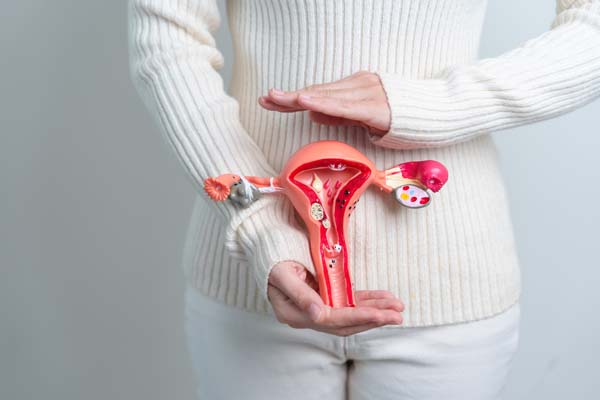What to Expect During a Gynecological Visit for Fibroids

Your gynecologist can help confirm the presence of fibroids in your uterus. Calling ahead to schedule a visit for these growths is the first step to confirm the presence of these tumors. Knowing what to expect during this checkup can help you prepare for it. If you want to know what will take place during your gynecological visit for fibroids, here are the details.
Consultation
The gynecologist will ask the patient about current symptoms. In some cases, patients have small uterine fibroids. These do not cause any symptoms at all. Others do not need treatment either. Larger growths cause several symptoms:
- Chronic vaginal discharge
- Pain during intercourse
- Painful menstruation
- Excessive bleeding during menstruation
- Constipation
- Breakthrough bleeding
- Low back pain
- Bloating
- Abdominal distention
- Inability to empty the bladder
The gynecologist will also ask the patient about lifestyle and health habits. This will help confirm if there are aggravating factors to the patient’s symptoms.
Pelvic exam
A conventional pelvic examination will confirm the presence of fibroids in the patient’s uterus. This will show the gynecologist the physical state of the uterus. The patient will lie on the exam table. With gloved hands, the doctor will feel the size and shape of the uterus. An irregularly shaped or large uterus is a sign that fibroids are present.
The gynecologist will perform an ultrasound first to confirm the presence of fibroids. This may be insufficient to establish a targeted form of treatment. A transducer will take pictures of the uterus from outside the abdomen. A transvaginal ultrasound will take pictures of the uterus from inside the uterus. This will take 30-60 minutes. The radiologist will interpret the results and report to the gynecologist.
Other exams
The gynecologist may need more tests. Explaining the diagnostic tests to the patient will help prepare the patient the right way. These tests may occur after the ultrasound and pelvic exam. Others may need scheduling.
An MRI (magnetic resonance imaging) is an expensive imaging exam. It gives gynecologists a more detailed image of the uterus. An MRI provides the location, number, and size of the fibroids. This imaging exam will take about 45-60 minutes. A saline hysterosonography can detect the submucosal polyps and fibroids. It is a 30-minute radiation-free exam.
Diagnostic hysteroscopy can see inside the uterus using a hysteroscope. The gynecologist will inflate the uterine cavity with carbon dioxide gas or saline solution. This test can happen in an operating room or doctor’s clinic. This 30-minute imaging exam can identify growths.
Hysterosalpingography uses a dye to make the fallopian tubes and uterine cavity pop out on X-rays. The gynecologist can suggest this visual exam if there is a concern about infertility. This imaging exam can help the gynecologist see if the fallopian tubes are blocked or open. It can also show the presence of submucosal fibroids.
Your gynecologist visit can confirm or rule out the presence of fibroids in your uterus
A healthy reproductive system results in a good quality of life. Your gynecologist can order diagnostic imaging exams and a pelvic exam to confirm the presence of these fibroids. Routine health visits can help detect them early. This can lead to early treatments as well.
Get more information about Donald Eckhardt Jr., M.D. , Kari Eckhardt W.H.N.P., C.N.M. in Tomball at https://eckhardtobgyn.com.
Check out what others are saying about our services on Yelp: Fibroids in Tomball, TX.
Recent Posts
Getting ready to welcome a child into the world is one of life's most meaningful experiences. Many expectant parents today choose to work with a midwife for prenatal care and labor support because midwives focus on personalized, patient-centered care. A midwife is a trained healthcare professional who provides comprehensive services throughout pregnancy, birth, and postpartum recovery.A…
Menopause is a natural transition in a woman's life, typically occurring between the ages of 45 and 55. Women's health services help you manage menopause-related symptoms and challenges while supporting your overall well-being. While it is important to remember that menopause is a biological milestone, it can impact your cardiovascular health, bone density, and mental…
OBGYN, or an obstetrics and gynaecology doctor, visits support lifelong reproductive health, and the right questions turn short appointments into clear decisions. Preparation reduces anxiety and improves outcomes. This guide provides practical and respectful prompts for preventive care, pregnancy planning, and symptom evaluation. Shared decision-making grows stronger when patients engage with the OBGYN as a…
A gynecologist may suggest incontinence surgery when a patient's loss of bladder control is interfering with daily life. Urinary incontinence is relatively common in older adults, according to the Mayo Clinic, and it can be a normal symptom of aging. It is important to speak to a qualified gynecologist if the symptoms are becoming too…


